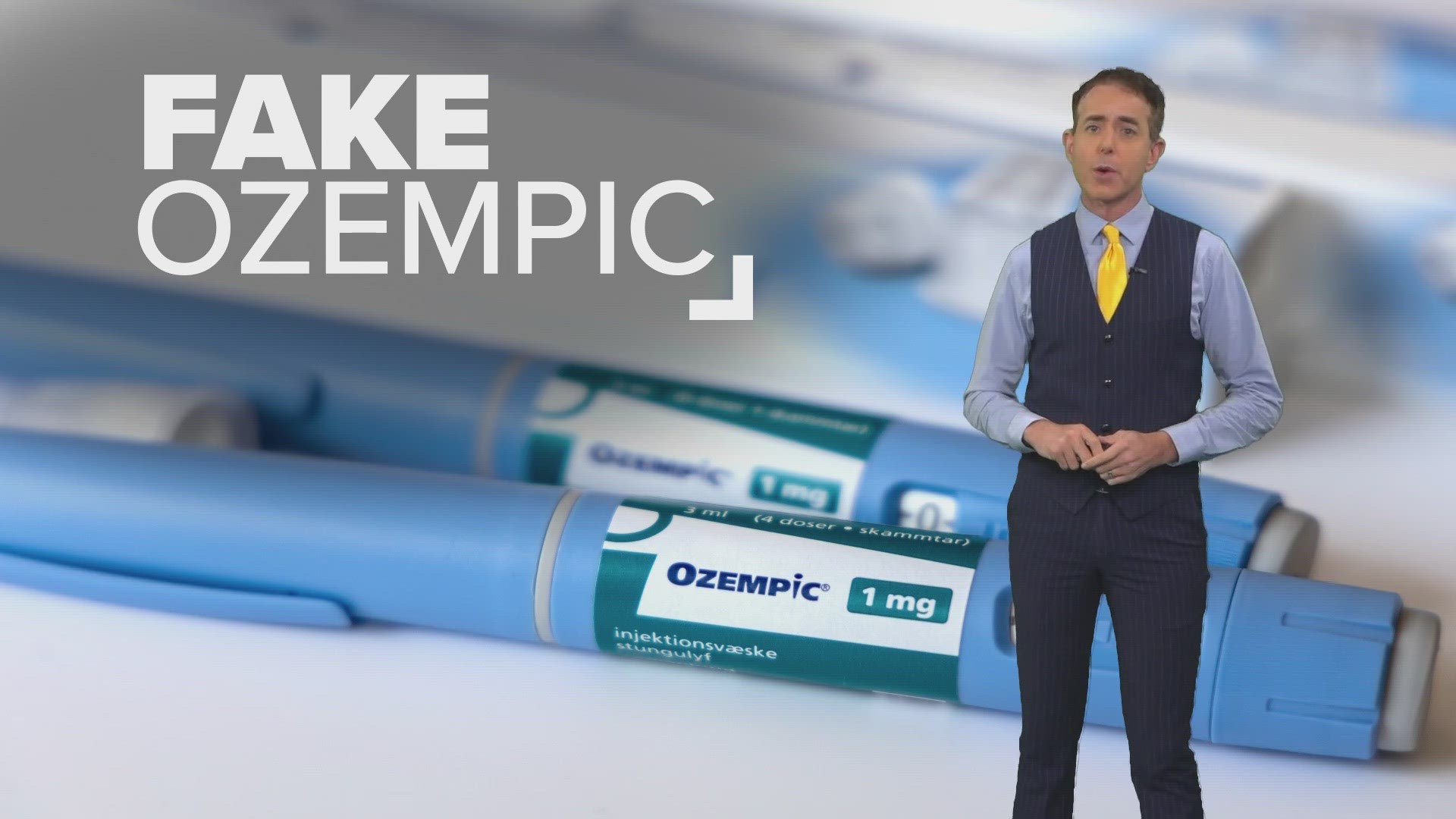SAN ANTONIO — They're calling it "Faux-Zempic" or fake Ozempic. First there was a shortage of medication, but now fake versions are landing increasing numbers of people in the ER.
A big problem with these fake pens is that they contain insulin, not semaglutide like the actual Ozempic pen. And injecting insulin, when you think you're getting something completely different, can have dangerous effects. Dr. Jill Waggoner, a Family Practice Concierge Physician told us, "If it does not require a physician's prescription, then in all likelihood, this is not the medication that you think you're getting."
Some side effects from the counterfeit Ozempic include hypoglycemia, seizures, blurred vision, kidney failure, and gallstones. Dr. Waggoner added, "Insulin is lifesaving if you need it, but if you don't, it can be life threatening."
So, how do you tell whether or not it is counterfeit? An authentic Ozempic carton has appropriate NDC and batch/lot numbers, as well as 4 needles, unless it is the 0.25/0.5 mg dose carton which has six needles. A counterfeit carton is missing content or text, such as the 0.5 mg dose and "for single patient use only," along with missing batch/lot numbers.
Dr. Maria Escobar-Vasco is an endocrinologist and diabetes expert. She’s also a clinical assistant professor of endocrinology at UT Health San Antonio, and told us, "Someone can end up killing themselves without even knowing because they're injecting so much insulin in their body without even knowing."
The FDA continues to monitor the situation and told us, "While we understand certain drugs are in short supply and patients are having difficulty obtaining their medication, the FDA urges patients to obtain prescription drugs only from state-licensed pharmacies that are located in the U.S., where the FDA and state authorities can assure the quality of drug manufacturing, packaging, distribution and labeling."
The FDA also has a BeSafeRx campaign to help consumers learn about how to safely buy prescription medicines online.

